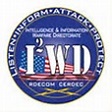CERDEC I2WD RSID posts RFI
 On May 24, the U.S. Army posted a Request for Information (RFI) for the Use of Automotive Radar Technologies to Provide 360° Situational Awareness (SA) for Army Rotorcraft in Degraded Visual Environments (DVE). All responses to this market research must be submitted no later than 4:00 PM EST (local time at Aberdeen Proving Ground, MD) on June 17.
On May 24, the U.S. Army posted a Request for Information (RFI) for the Use of Automotive Radar Technologies to Provide 360° Situational Awareness (SA) for Army Rotorcraft in Degraded Visual Environments (DVE). All responses to this market research must be submitted no later than 4:00 PM EST (local time at Aberdeen Proving Ground, MD) on June 17.
This is a Request for Information (RFI) for the use of low-cost, mass-produced automotive radar technologies to enhance 360 Situational Awareness (SA) on rotorcraft. The objective is to determine whether such radars, possibly with modifications, could provide capabilities such as collision avoidance during in-flight operations, obstacle avoidance during take-off and landing (especially under DVE conditions), and a threat warning of bullets, RPGs and other projectiles passing within several tens-of-meters of the rotorcraft.
Description:
The United States Army, Research Development and Engineering Command (RDECOM) Communications-Electronics Research, Development and Engineering Center (CERDEC), Intelligence & Information Warfare Directorate (I2WD), Radar Systems and Identification Division (RSID) is conducting this RFI to determine the capabilities of pre-existing automotive radar technologies for use on Army rotorcraft. These radars could be used as:
- A collision avoidance aid during in-flight operations where several rotorcraft might be flying in close proximity, especially during DVE conditions (e.g. rain, fog, snow, dust storms, night, smoke, etc.).
- A landing and take-off aid in various DVE conditions (e.g. brownout, fog, smoke, rain, etc.). For example, making the pilot aware of obstacles to the left or right if a lateral maneuver is required.
- A threat warning system for detecting and determining the angle of ground fire passing near the rotorcraft.
Notionally, a Distributed Aperture System (DAS) comprised of suitably-modified, lightweight automotive radar sensors would be positioned about the rotorcraft to achieve 360 degree or spherical SA. The Radio Frequency (RF) DAS will be used to supplement a forward looking sensor suite for pilotage. The forward looking sensor suite will notionally include a mmW Radar, a Long Wave Infrared (LWIR) camera, and Lidar. The DAS may also include other sensors (e.g. high-performance Electro-Optical/Infra-Red (EO/IR)). The wide-angle information obtained from the DAS would be registered and fused with the narrow field-of-regard information obtained from the forward-looking sensors and with digital terrain elevation data (DTED) (e.g., DTED to provide a seamless, head-tracked image to the operator that enables pilotage in various DVEs (e.g. brownout, fog, smoke, rain, etc.). The RF DAS must include the processor and algorithms necessary to provide the types of information described above.
CERDEC I2WD RSID desires a low-cost, spherical-coverage RF DAS that can meet the needs of the Army Aviation community for SA in DVE conditions. While latency and range requirements are not specified, they will be considered. The desired RF DAS will be modular. The system is intended for the legacy fleet.
Full information is available here.
Source: FedBizOpps








